Frost Protection - UTL Repository
Frost Protection - UTL Repository
Frost Protection - UTL Repository
You also want an ePaper? Increase the reach of your titles
YUMPU automatically turns print PDFs into web optimized ePapers that Google loves.
MECHANISMS OF ENERGY TRANSFER<br />
Sensible heat is energy that we can “sense”, and temperature is a measure of the<br />
sensible heat content of the air. When the sensible heat content of air is high, the<br />
molecules have higher velocities and more collisions with each other and their<br />
surroundings, so there is more kinetic energy transfer. For example, a<br />
thermometer placed in warmer air will have more air molecule collisions,<br />
additional kinetic energy is transferred to the thermometer and the temperature<br />
reads higher. As sensible heat in the air decreases, the temperature drops. In frost<br />
protection, the goal is often to try to reduce or replace the loss of sensible heat<br />
content from the air and plants. Sensible heat flux density (H) is the transfer of<br />
sensible heat through the air from one place to another. The flux density is<br />
expressed as energy per unit time per unit surface area (e.g. W m -2 ) that the<br />
energy passes through.<br />
Latent heat is released to the atmosphere when water is vaporized and the<br />
latent heat content of the air depends on the water vapour content. Latent heat<br />
changes to sensible heat when water changes phase from water vapour to liquid<br />
water or ice. As water vapour moves, the flux density is expressed in units of<br />
mass per unit area per unit time (e.g. kg m -2 s -1 ). Multiplying by the latent heat<br />
of vaporization (L) in J kg -1 converts the water vapour flux density from mass<br />
units to energy units. Therefore, the flux is expressed in energy per unit time per<br />
unit surface area or power per unit surface area (e.g. W m -2 ). The water vapour<br />
content of the air is a measure of the latent heat content, so humidity expressions<br />
and the relationship to energy are discussed in this chapter.<br />
Energy balance<br />
Sign convention<br />
Positive and negative signs are used in transfer and balance calculations to<br />
indicate the direction of energy flux to or from the surface. Any radiation<br />
downward to the surface adds to the surface energy and therefore is considered<br />
positive and given a “+” sign. Any radiation away from the surface removes<br />
energy and it is considered negative with a “-” sign. For example, downward<br />
short-wave radiation from the sun and sky (R Sd ) is positive, whereas short-wave<br />
radiation that is reflected upward from the surface (R Su ) is negative. Downward<br />
long-wave radiation (R Ld ) is also given a positive sign since it adds energy to the<br />
surface and upward long-wave radiation (R Lu ) is given a negative sign. Net<br />
radiation (R n ) is the “net” amount of radiant energy that is retained by the<br />
surface (i.e. the sum of all gains and losses of radiation to and from the surface).<br />
These relationships are illustrated for (a) daytime and (b) night-time in<br />
Figure 3.2. Note, in the equation, that net radiation is equal to the sum of its<br />
43


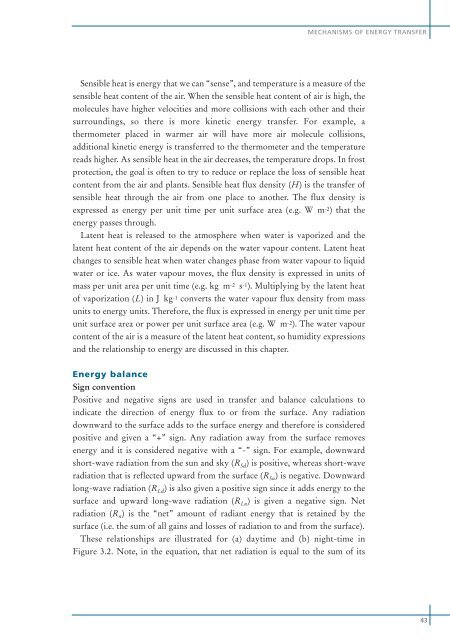
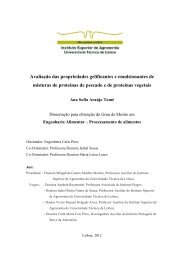
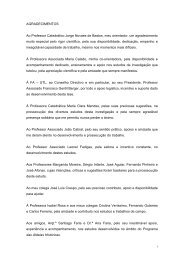
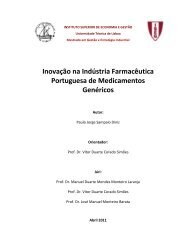
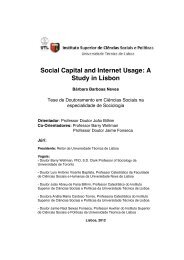
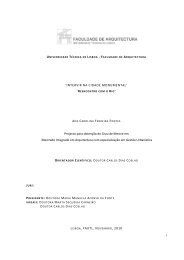
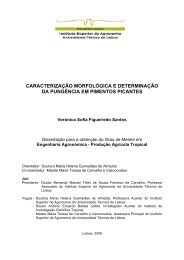

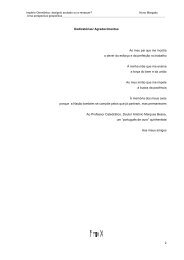
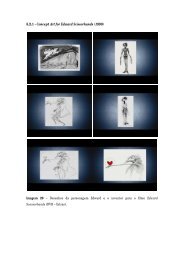
![Tese - Es..[1].pdf - UTL Repository - Universidade Técnica de Lisboa](https://img.yumpu.com/25707135/1/184x260/tese-es1pdf-utl-repository-universidade-taccnica-de-lisboa.jpg?quality=85)


